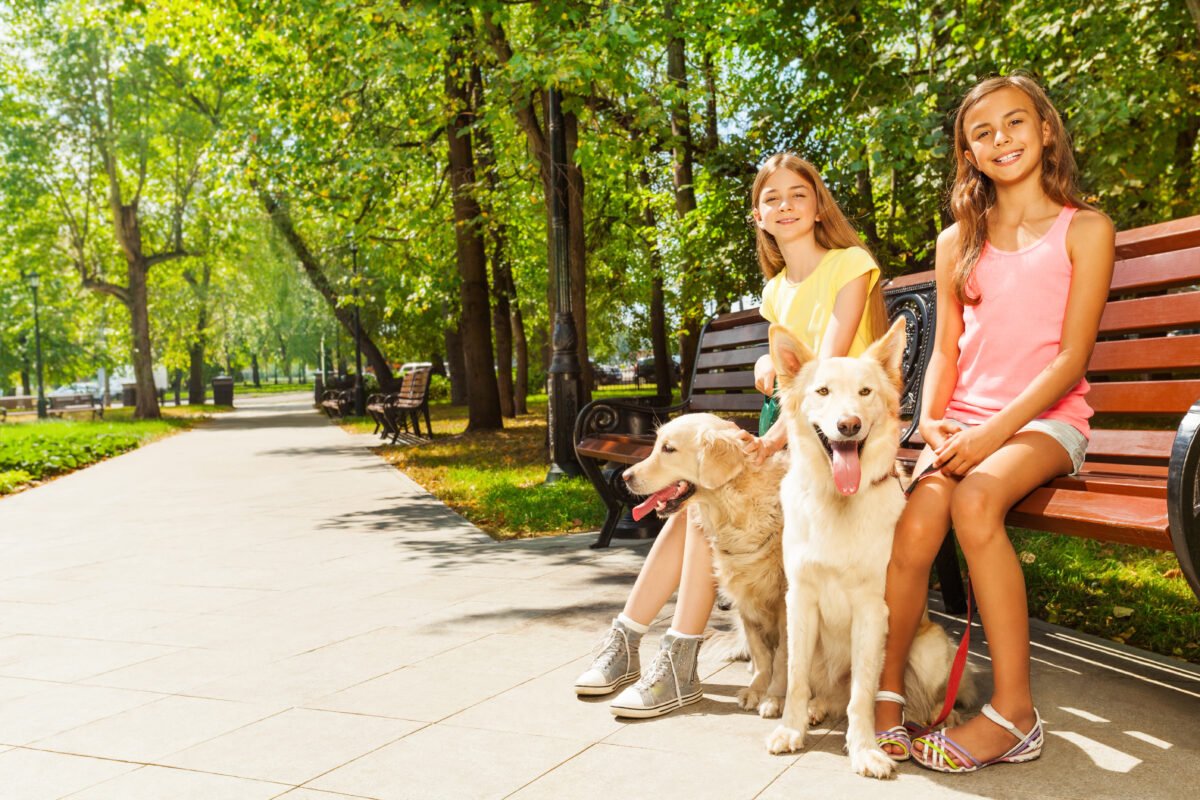When my Lab mix, Rio, was younger, we volunteered as a therapy dog team at a hospital. One evening, a 2-year-old girl with a huge bandage covering one side of her face ran up to Rio and started patting him on the head and trying to hug him.
Rio licked the unbandaged side of her face as the parents hurried over.
“Sorry – she doesn’t understand how to be with dogs yet,” her father said. “Our dog bit her on the face – that’s why we’re here – but it wasn’t his fault. She startled him and he bit her.”
When he called the animal shelter, they said with a history of biting, his dog would be hard to place in a new home – and probably put down.
“I don’t know what to do,” he said through tears. “He’s always been a good dog.”
Dogs don’t bite because they’re inherently bad. They often bite because they’re fearful, according to Nicole Ellis, CPDT-KA, a Fear Free certified dog trainer, pet lifestyle expert, and author of “Working Like A Dog.”
So in honor of National Dog Bite Prevention Week, I asked Ellis about common misconceptions about greeting dogs – and what we should do to help prevent any fear, stress, or anxiety.
MYTH #1: When approaching a dog, put your hand out so they can sniff it.
This is the “biggest” misconception, according to Ellis.
“For a lot of dogs, that can actually be threatening,” she advised. “Not everyone’s dog loves a hand coming toward their face. It’s not safe for them and it’s not safe for us, and it doesn’t really communicate much anyway.”
MYTH #2: Dogs like to get hugs and kisses.
“Most dogs actually do not like to be hugged. It makes them feel trapped,” she cautioned. “Hugging often causes stress.”
We should educate children about petting instead of hugging – and that dogs need breaks from our affection. Even dogs who usually enjoy being petted sometimes want to be left alone, such as when they’re tired, sore, or hungry.
“It’s important to respect growling and not punish it, especially with greetings,” she noted.
MYTH #3: Only happy dogs wag their tails.
Dogs certainly wag their tails when they’re happy, but they also wag when they’re overstimulated or stressed. So look at overall body language, including stance and facial expressions, before greeting a dog.
“It’s amazing the amount of adults I see who don’t ask permission of the animal – just the person,” Ellis said. “We don’t need to pet them just because the pet owner says, ‘No – he’s fine.’ If you’re seeing that the dog is not comfortable, listen to your gut.”
MYTH #4: Our dogs need to meet every person and every dog.
“By letting our dogs rush up and meet everybody, we’re teaching them that they have to meet everybody. That’s how we get dogs that are barking and crying when they see a dog or person that they don’t get to meet – they’re stressed about it,” she said. “So it’s just as important that our dogs see other dogs and see other people and don’t greet them.”
What’s the right way to greet a dog? Ellis shares these tips:
- Ask permission from the owner. If they say no, respect it. If they say yes, you can ask where the dog likes to be petted.
- Orient yourself at a 45-degree angle from the dog.
- Get low – sit or kneel so that you aren’t looming over the dog. If you have a child with you – especially if the dog is off leash – squat with them to help prevent them from being knocked over.
- Avoid eye contact. “Prolonged eye contact can be interpreted as a threat,” she explains.
- If you have treats and it’s okay with the pet parent, toss the dog a treat.
- If the dog approaches you, slowly move toward petting them. No rushing!
- Don’t pet the dog on the top of their head. Stick with the chest, sides, or chin.
- Pet the dog calmly, with smooth, fluid movements.
- After petting a dog two or three times, stop and see what he does. Does the dog stay there and want to be petted again, or does he move away? Keep petting if he’s interested; stop if he isn’t.
“There’s such a difference when we invite the dog over and he comes into our space and says he wants to be pet,” she concludes. “You’re going to have a better bond.”
This article was reviewed/edited by board-certified veterinary behaviorist Dr. Kenneth Martin and/or veterinary technician specialist in behavior Debbie Martin, LVT.
Award-winning journalist Jen Reeder is former president of the Dog Writers Association of America.
Want to stay in the loop on the latest and greatest in keeping your pet happy and healthy? Sign up for our free newsletter by clicking here!








